Pistol Zone Read Variations
By Kyle Schmitt
Head Coach
Atholton High School (MD)
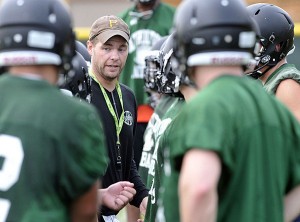 Kyle Schmitt, Head Football Coach, Atholton High School (MD)
Kyle Schmitt, Head Football Coach, Atholton High School (MD)
Editor’s Note: Coach Schmitt has put together a 38-9 record through 4 years as the head coach at Atholton High School. During that time, his teams have won 1 County Championship and appeared in three Regional Championships during that time. Prior to his time at Atholton, Coach Schmitt served as a graduate assistant at the University of Maryland and as Tight Ends coach at St. Vincent College (PA).
In 2009, my first year at Atholton, our football team was primarily based out of 21/11 personnel sets running both Zone and Gap Concepts. The success of that season encouraged us to stick with these sets that many would consider a “Pro Style” offense. In my second season as Head Coach at Atholton we started 2-2 and lacked any true cohesiveness or identity on offense. We had an underachieving offensive line and we weren’t correctly utilizing our skill players. Our offense was a collection of plays, rather than a system. The Offense was diverse and gave defenses plenty to prepare for but little to truly worry about.
At the suggestion of my assistant Coach Jon England, I watched a Friday evening primetime game between Nevada and California. I was aware of the Pistol but gave it little consideration. I felt the short gun snap and deep tailback gave the offense minimal advantage. However, that night I came away extremely impressed with the Zone Read, QB Runs and paralyzing effect the misdirection had on the defense. While it was easy to see that QB Colin Kaepernick was a special player he also played in a system perfectly suited to his skill set. Chris Ault’s system combined Wing-T, Veer Option and Spread principles to create a powerful run game. Needless to say Nevada games soon began to fill the Schmitt family DVR.
Our offensive staff began to experiment with the Pistol during practice in order to take advantage of our strengths. We found the Pistol enabled us to better utilize all of our skill while simplifying our blocking schemes. The past two years we have evolved into a base Pistol offense. We are not exclusively Pistol because we feel the need to have additional backfield sets, formations and personnel groupings for different situations we will encounter as an offense. However, the Pistol has become the core of our offense and has been an excellent set to build upon.
Basic Tenets of Our Pistol Run Game
Zone Read
The base play in our Pistol offense is the Inside Zone Read. In 2010, we dedicated ourselves to running Inside Zone because our offensive line was struggling. The Pistol allowed us to feature this play from a variety of looks, especially Zone Read Play. The balance the Pistol provides allows us to dress up the Inside Zone from different formations and motions, without giving away our intention. Defenses struggle to cheat their backside ends, OLB’s and alley players to confuse the QB Read because of the possibility of the play coming either way.
The zone read has become the emphasis of our offense and the first concept we teach our offensive line. Instead of teaching a variety of plays we pride ourselves in blocking this scheme to a variety of fronts and pressures.
Quarterback Run Game
Over the past three seasons we have been fortunate to have talented Quarterbacks who are able to run the football. Moving the QB out from under center has opened up the QB run game. Each week we include QB Zone, Power, Counter, Power Read and Zone Read plays for our Quarterback out of Pistol. We found that running the QB was going to be a crucial element of our game plan versus top defenses. Some of our biggest wins and most successful offensive performances have featured our QB’s rushing upwards of 15-20 times on designed runs.
Base Run Concepts
The base run play of our Pistol Package is the Zone Read. Numerous teams from the NFL to High School football have adopted some type of Pistol backfield set, but very few of them are running a true Pistol Offense based on the Zone Read. We have very specific goals when running the Zone Read.
- Establish the Tight Zone play with multiple double teams at the Point of Attack. Our #1 goal is to run the Inside Zone when calling this play.
- Eliminate a defender by reading him. We will read the: 1. End Man on the L.O.S .; 2. 1st Defender from the Center backside; and, 3. backside LB’s.
- Create an open alley for the Quarterback Keep by formation or lead blocker. When teams dedicate their defense to stopping the hand off the QB will keep the football. We want to make sure that we have properly taken care of the alley in which the QB will run.
- Slow the downhill reads of the Inside LB’s with Bluff, Jet and Orbit action. We can also slow down linebackers by making them the read player.
- Establish constraint plays that do not allow the opponent to dedicate their defense to stopping this play.
We have the ability to run the Zone Read play out of any Pistol formation in our offense. The past two years we have concentrated on 10 and 20 personnel sets due to the lack of a true tight end in our program. Below are some of the ways that we run the Zone Read Play out of our 1 Back sets.







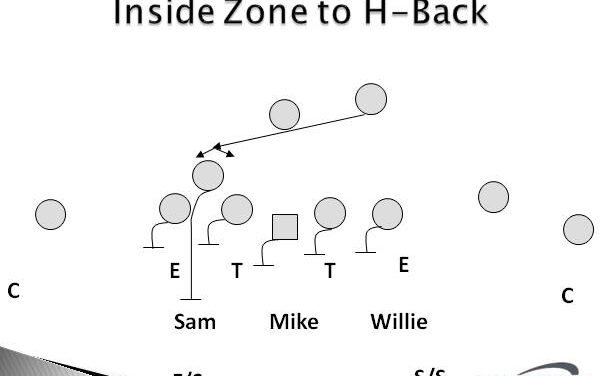

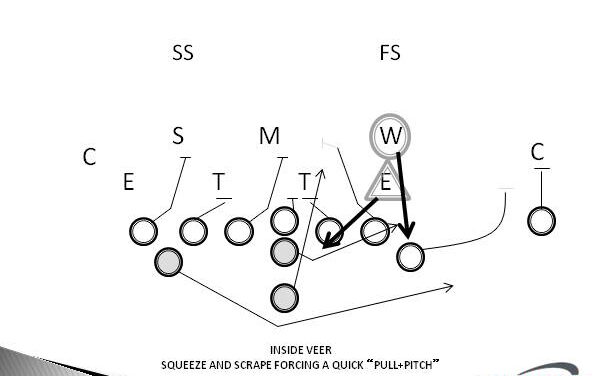
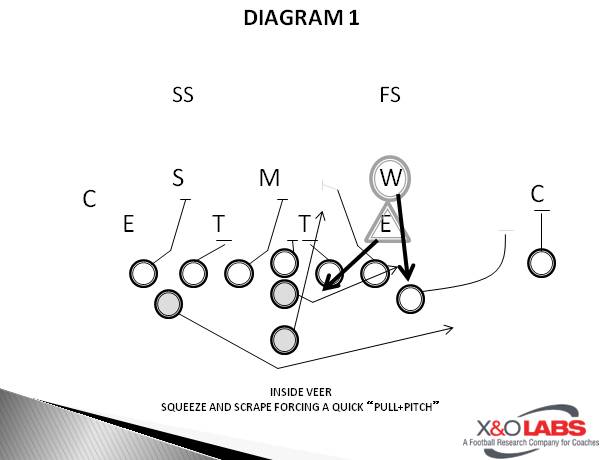
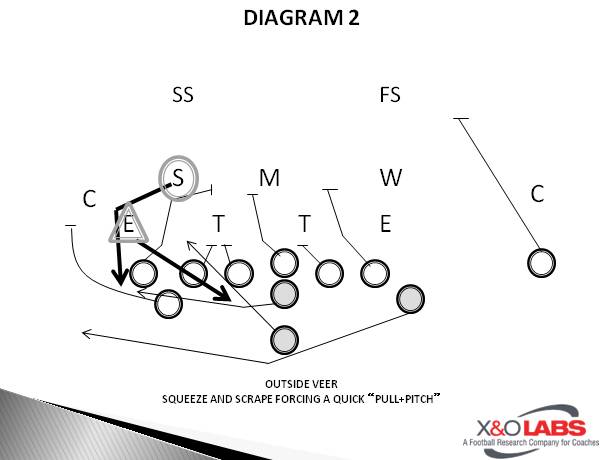
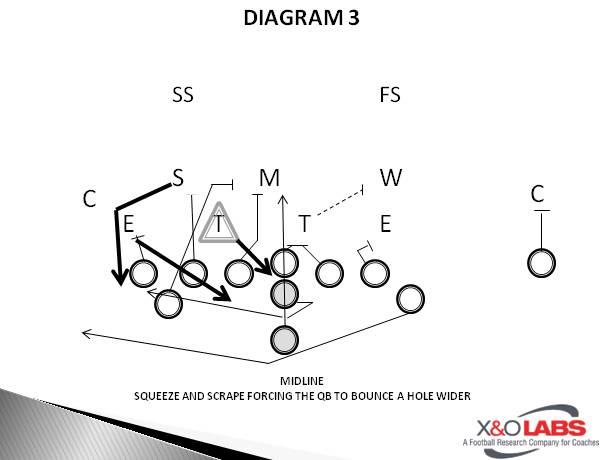
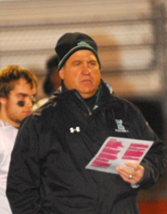
 Editor’s Note: Coach Sedmak is presently entering his second year as Offensive Coordinator at Edina High School, a suburb of Minneapolis, MN. Prior to Edina, he was the head coach at Mason High School, and at Shaker Heights High School in the suburbs of Cleveland, Ohio for 13 seasons (99-40 record). Coach Sedmak has had offensive linemen earn scholarships and go onto play at Ohio State, Michigan State, Penn State, Louisville, University of Toledo, Miami University (OH), University at Buffalo and Northeastern University, among others. Three of those went onto make NFL rosters.
Editor’s Note: Coach Sedmak is presently entering his second year as Offensive Coordinator at Edina High School, a suburb of Minneapolis, MN. Prior to Edina, he was the head coach at Mason High School, and at Shaker Heights High School in the suburbs of Cleveland, Ohio for 13 seasons (99-40 record). Coach Sedmak has had offensive linemen earn scholarships and go onto play at Ohio State, Michigan State, Penn State, Louisville, University of Toledo, Miami University (OH), University at Buffalo and Northeastern University, among others. Three of those went onto make NFL rosters.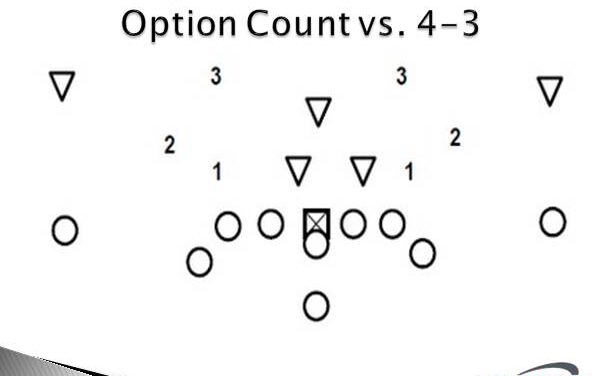

 Editor’s Note: The following clinic report was written by Utica College (NY) offensive line coach George Penree, a post he has held since 2007. In 2010 Utica broke more school-records including points in a single game (78), pass completions (231), passing a receiving yards (2,742), passing yards per game (274.2), total offensive yards (4,007), total yards of offense per game (400.7), and all purpose yards (5,049). Coach Penree will be happy to answer any comments or questions by leaving them below.
Editor’s Note: The following clinic report was written by Utica College (NY) offensive line coach George Penree, a post he has held since 2007. In 2010 Utica broke more school-records including points in a single game (78), pass completions (231), passing a receiving yards (2,742), passing yards per game (274.2), total offensive yards (4,007), total yards of offense per game (400.7), and all purpose yards (5,049). Coach Penree will be happy to answer any comments or questions by leaving them below.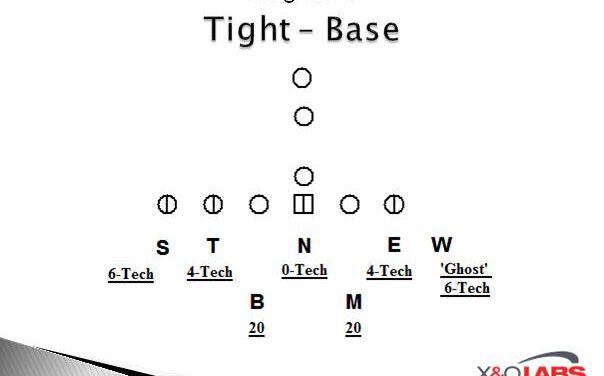
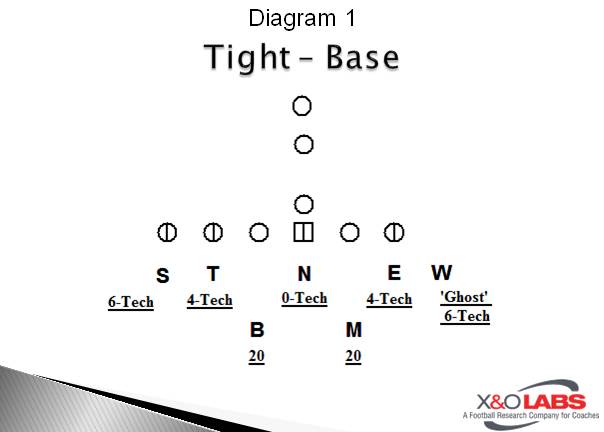 ‘Base’ tells the noseguard to align head-up as a “0” technique on the center. The DT will align to the call as a 4-Technique. The Buck LB will align as a 30-Technique to the call. The DE will align away from the call as a 4-Technique. The Mike LB will align as a 30-Technique away from the call. The Sma LB aligns on the Tight-End as a 6-Technique and the Will LB aligns opposite the Tight-End as a ‘Ghost’ 6-Technique. It is a balanced structure.
‘Base’ tells the noseguard to align head-up as a “0” technique on the center. The DT will align to the call as a 4-Technique. The Buck LB will align as a 30-Technique to the call. The DE will align away from the call as a 4-Technique. The Mike LB will align as a 30-Technique away from the call. The Sma LB aligns on the Tight-End as a 6-Technique and the Will LB aligns opposite the Tight-End as a ‘Ghost’ 6-Technique. It is a balanced structure.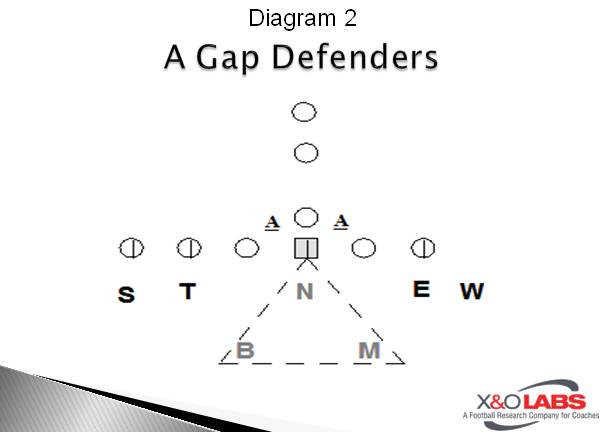
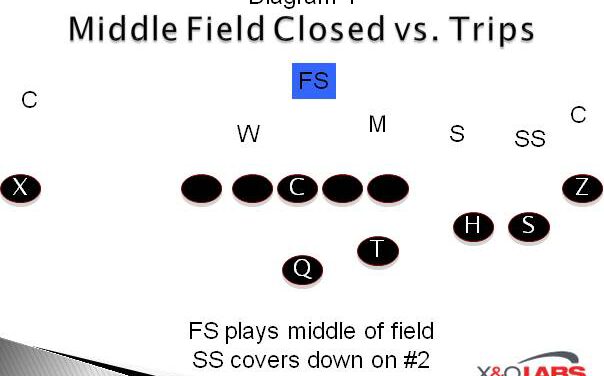
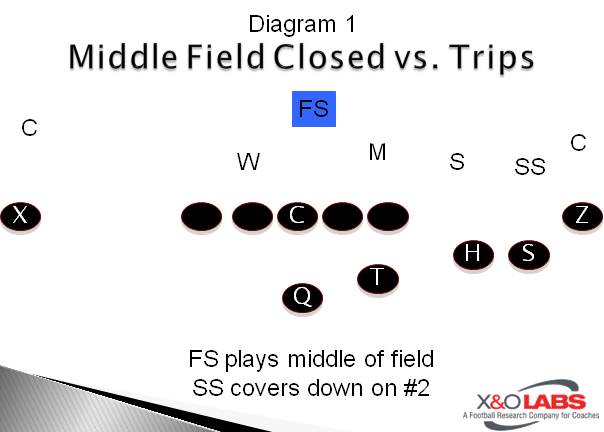
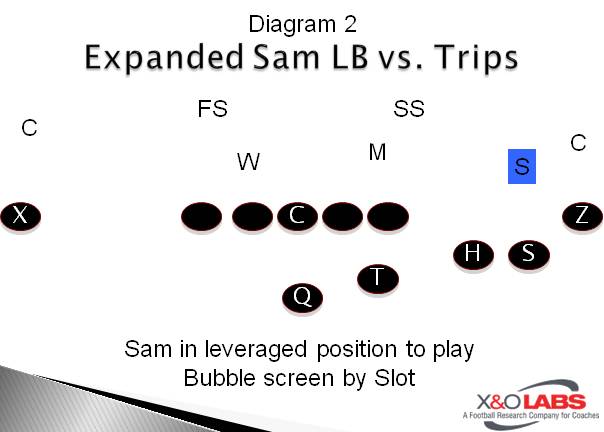
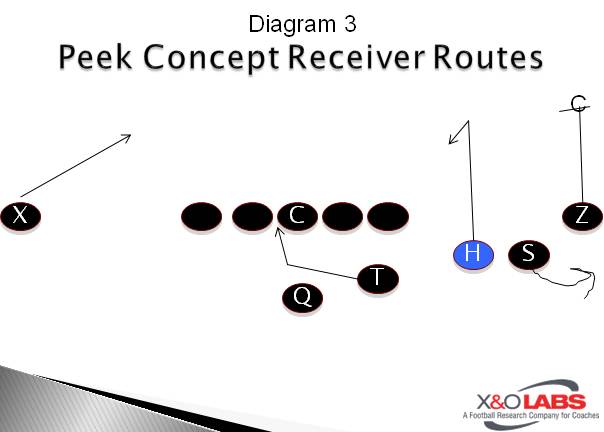
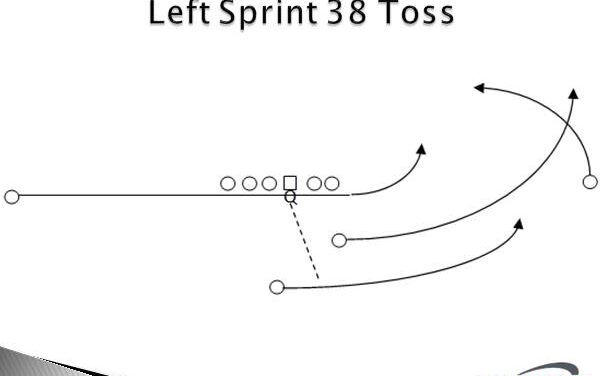
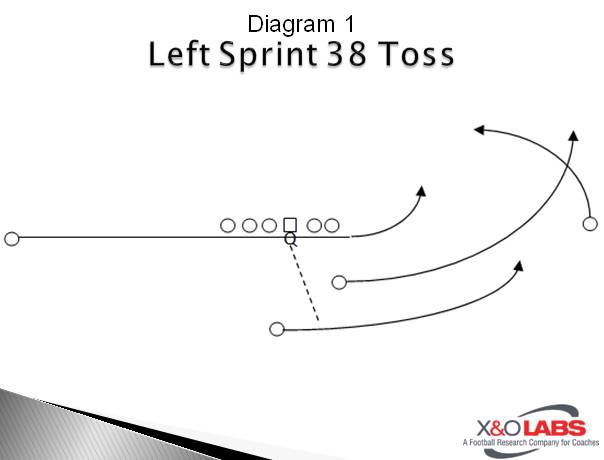
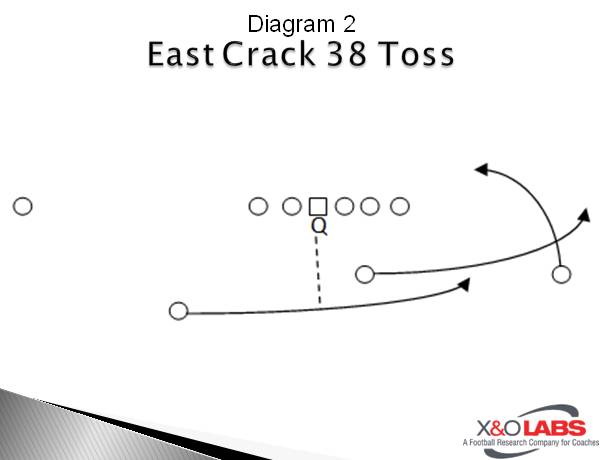
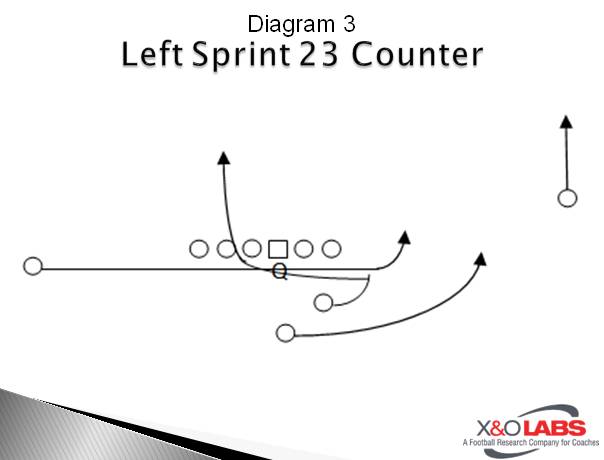

 Here is an everyday drill progression that I have always used with my running backs. Places an emphasis on holding on to the football at all times. Only takes 3-4 mins max.
Here is an everyday drill progression that I have always used with my running backs. Places an emphasis on holding on to the football at all times. Only takes 3-4 mins max.



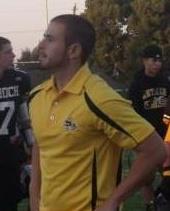
 Editor’s Note: Brett Dudley currently serves as the Offensive Coordinator at Antioch HS in the Bay Area. He has coached football for 6 years and was recently promoted to Varsity Offensive Coordinator/Assistant Head Coach making him the youngest OC in school history.
Editor’s Note: Brett Dudley currently serves as the Offensive Coordinator at Antioch HS in the Bay Area. He has coached football for 6 years and was recently promoted to Varsity Offensive Coordinator/Assistant Head Coach making him the youngest OC in school history.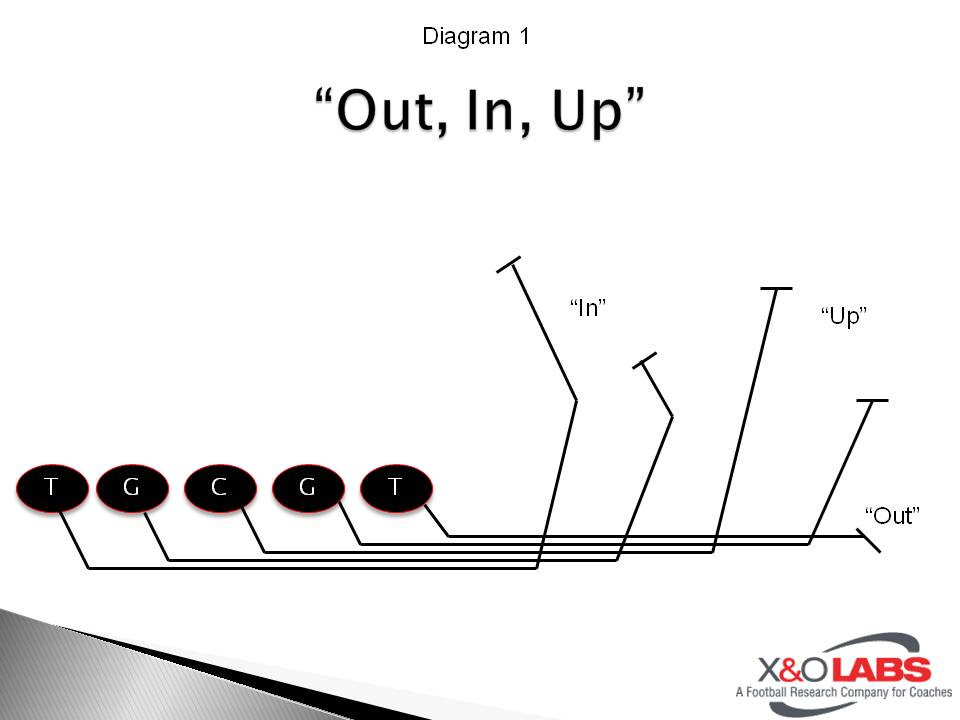 The advantage of this concept is how it adapts to any defensive call or look. This is, of course, useful since you cannot always predict the defense before the play. Sometimes our receivers won’t know who they are blocking until the ball is snapped, so by teaching my entire the lineman a concept as opposed to a man, they are able to account for any possible unblocked defenders on that side of the field.
The advantage of this concept is how it adapts to any defensive call or look. This is, of course, useful since you cannot always predict the defense before the play. Sometimes our receivers won’t know who they are blocking until the ball is snapped, so by teaching my entire the lineman a concept as opposed to a man, they are able to account for any possible unblocked defenders on that side of the field.